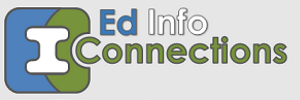Data can be powerful. It provides analysts and businesses with insights into patterns and behaviors that mere intuition rarely can. It holds tremendous potential for education as well. At the same time, data can have personal and private information. The new tools flooding the market now. Care should be taken with data that relates to children or even those who work in schools is concerned.
The Allure of Online Tools for Learning
Many reformers, innovators, policymakers, and others are gaga over the power of online tools to reshape learning opportunities for students as well as teachers. The number of open educational resources (OERs) has been exploding with many highly visible examples like the Khan Academy that has hundreds of online videos with data reporting tools and other programs like the WISE science education program that serves thousands of classrooms worldwide. There have been for years teacher sites where they can share content and even more recently with the Shared Learning Consortium (SLC) and the new American Federation of Teachers’ Share My Lesson (SLM). And, more is coming. While all of these tools put more options at the hands of educators, when they are used and even before they are used when people search through google for items that lead them to these tools data is captured. That data is the same kind of data that allows retailers to show me an ad for what I searched on Amazon for yesterday. It is data that can be combined with other data to provide what marketers call a 360 degree view of the customer. This is new territory for educators and new for policymakers as well.
A Broad Conception of Data
It has been common for the term data to be used to mean test data. Much of the research literature on data use makes this connection and many of those who are promoting data use place emphasis on assessments either from annual tests, interim benchmarks, or classroom assessments. But educational data is more, much more than that. It can include:
- 1. Surveys and observations
2. Demographics and descriptions of programs and services
3. Activity traces that show movements through online and virtual spaces
4. Paradata about when and where activities were conducted
5. School class and intervention group and activity information (who is taught what by who)
6. Standards and benchmarks (what is being taught)
7. Personal and preferential data
In the new online world these types of data can be captured through various tools and then brought together with other kinds of information that may be held by other parties. Online advertisers are able batch and correlate data about potential consumers and target their offerings. This has a lot of benefit for consumers. Similarly, the variety of data that can be collected about students and teachers may also be a benefit to education. At the same time, the data have the potential to be used for many purposes, including for research.
Data Governance, Not Just for the Technical
The US Department of Education (DoED) has formed a privacy center to focus on the data they own and in systems they fund. However, other data, outside of the DoED purview as much of the online data will be has no such guidance or regulation. This new data is a powerful tool that can be used for many aims, but also for purposes that may not have the best interests of those in education. A data governance plan is a way that an organization fielding a new technology can consider the different types of data their technologies may collect and produce and how to best ensure that it is used responsibly and with appropriate protections for identities that are contained within it.

Leave a Reply